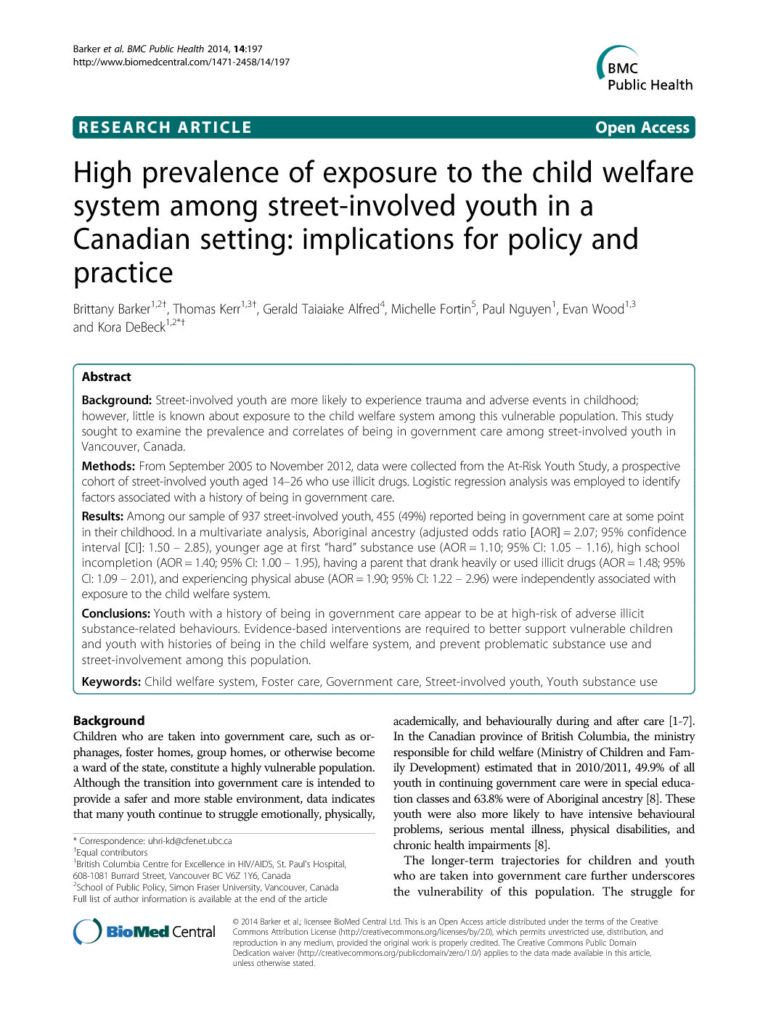
High prevalence of exposure to the child welfare system among street-involved youth in a Canadian setting: implications for policy and practice
Summary
This open access article is published in BMC Public Health and distributed under the terms of the Creative Commons Attribution License.
Background: Street-involved youth are more likely to experience trauma and adverse events in childhood; however, little is known about exposure to the child welfare system among this vulnerable population. This study sought to examine the prevalence and correlates of being in government care among street-involved youth in Vancouver, Canada.
Methods: From September 2005 to November 2012, data were collected from the At-Risk Youth Study, a prospective cohort of street-involved youth aged 14–26 who use illicit drugs. Logistic regression analysis was employed to identify factors associated with a history of being in government care.
Results: Among our sample of 937 street-involved youth, 455 (49%) reported being in government care at some point in their childhood. In a multivariate analysis, Aboriginal ancestry (adjusted odds ratio [AOR] = 2.07; 95% confidence interval [CI]: 1.50 – 2.85), younger age at first “hard” substance use (AOR = 1.10; 95% CI: 1.05 – 1.16), high school incompletion (AOR = 1.40; 95% CI: 1.00 – 1.95), having a parent that drank heavily or used illicit drugs (AOR = 1.48; 95%CI: 1.09 – 2.01), and experiencing physical abuse (AOR = 1.90; 95% CI: 1.22 – 2.96) were independently associated with exposure to the child welfare system.
Conclusions: Youth with a history of being in government care appear to be at high-risk of adverse illicit substance-related behaviours. Evidence-based interventions are required to better support vulnerable children and youth with histories of being in the child welfare system, and prevent problematic substance use and street-involvement among this population.
Discussion
Users can discuss this report and make suggestions for future updates. You must be signed in to submit a comment.
No comments
Join the conversation and
Become a Member Existing member loginbecome a member.